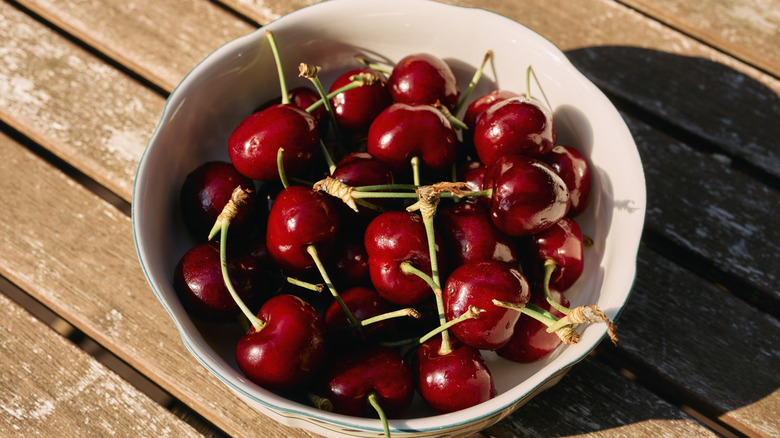What's The Most Expensive Kind Of Fruit At The Grocery Store?
It feels like grocery prices are jaw-dropping at the moment, and produce is always at the top of the list. Shoppers have come to expect certain fruits to command a premium, but according to the USDA Economic Research Service, the most expensive fruit product by cost per cup equivalent in 2022 wasn't a rare tropical berry or specialty melon — it was canned cherries in syrup or water, at $3.56 per cup equivalent. That price surpassed even frozen asparagus and more indulgent produce, making these cherries the priciest fruit option in typical U.S. grocery aisles.
This revelation may seem counterintuitive; a lot of people likely assume that fresh costs more because of the lower nutritional value associated with canned fruits. However, the higher price tag comes from the added cost of processing. There's pitting, syrup packing, and canning, which add labor, materials, and shelf-stable convenience costs that show up at checkout. Additionally, cherries themselves tend to be seasonal and delicate, another contributor to higher baseline prices. You're paying for preserved convenience and sweetness, and not just the fruit itself. So while sunny mangoes or exotic berries might feel more luxurious, it's that cup of cherries you want to throw in your kid's lunchbox that'll cost you a pretty penny.
Why the price gap between different types of fruits? matters
In addition to being helpful for budget planning, grocery prices reveal information about consumption barriers and food equity. Fresh fruit like watermelon and apples, both $0.50 or less per cup equivalent, remain accessible fruits that you can grab without wincing. But when shelf-stable fruits like canned cherries outprice fresh ones, it highlights the trade-offs consumers face when seeking convenience, longevity, or off-season access.
Beyond personal choice, price differences also influence how and when people eat fruit. Higher costs for canned varieties, which is the route you go when fresh produce isn't available or affordable, can discourage fruit intake, ultimately discouraging compliance with dietary guidelines. That's significant because national surveys show many Americans already fall short of daily fruit recommendations. Meanwhile, canned cherries serve purposes beyond snacking because they're also ingredients in pies, sauces, and cocktails — spaces where a high cost might shift recipe or menu decisions.
For home cooks and cost-conscious shoppers, this can spark creativity and inspire new ideas. Picking fresh cherries at the store when they're in season, freezing extras for later, or opting for more affordable canned options like apricots or peaches can help stretch the produce budget. In essence, understanding why that can of cherries costs more doesn't just inform spending; it can change how people shop, cook, and eat as well.


